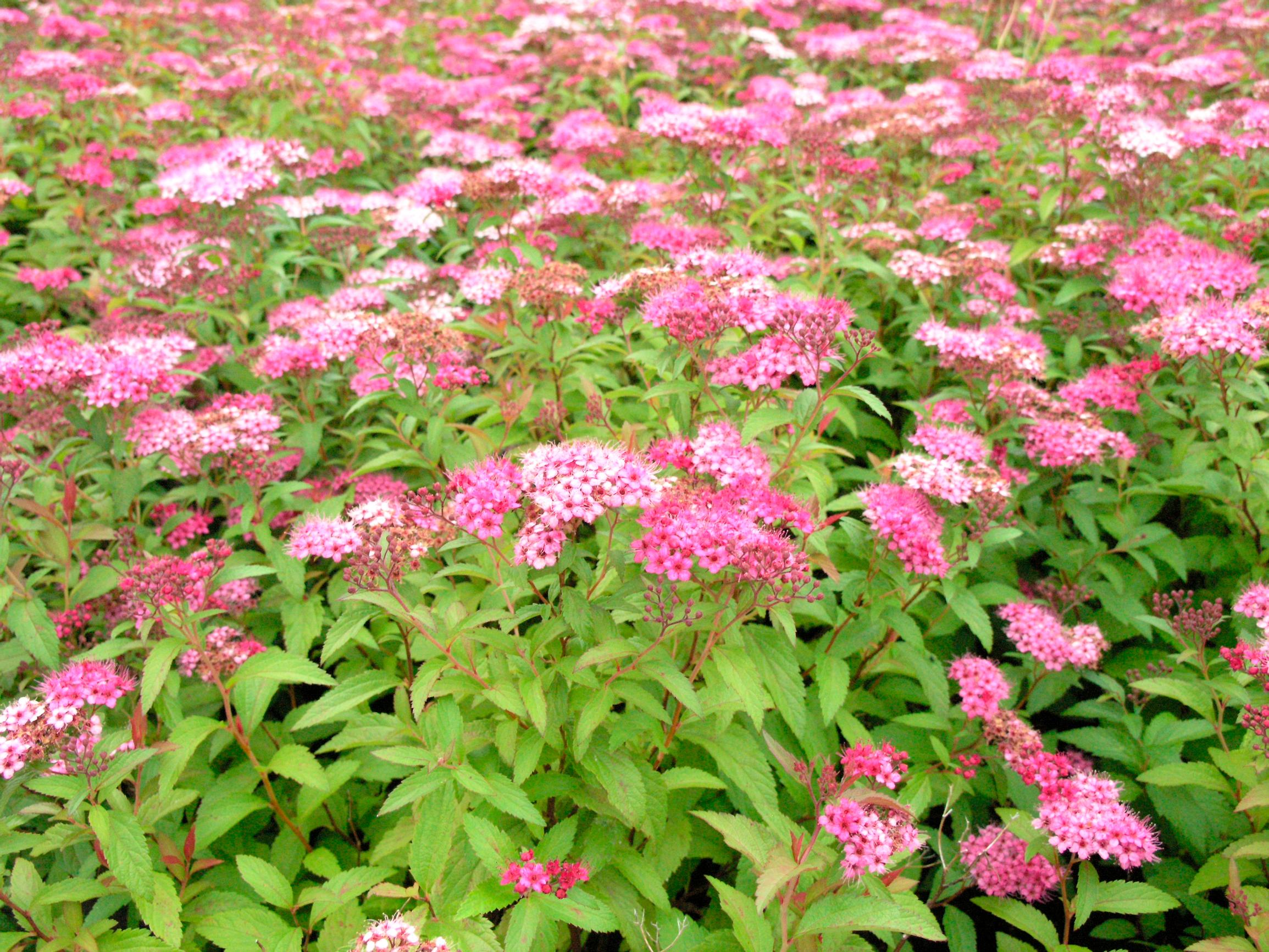
Spirea shrubs combine captivating blooms and easy care—pick the perfect variety for your garden
Spirea shrubs are a fantastic choice for every garden. With their charming appearance and abundant blooms, they thrive easily thanks to their minimal site requirements.
Spireas are highly popular ornamental shrubs because they thrive in almost any conditions. Undemanding and easy to care for, spirea shrubs bloom over a long period in sweet pink or white, and many develop a vibrant orange-red fall color in sunny spots.
Spirea shrubs thrive in many growing conditions
You’ll find a wide selection of spirea shrubs in different sizes and forms, suitable for a variety of growing conditions:
- The low-growing Spiraea beauverdiana and Spiraea decumbens make excellent groundcovers.
- Taller species such as bridal wreath spirea and Spiraea x watsoniana are perfect for hedges.
- Rose spirea (or rose meadowsweet) is an excellent choice for banks and slopes.
- Low Spiraea decumbens also adds a striking touch to a rock garden.
- Cold-hardy choices: White spirea (also called white meadowsweet) and bridal wreath spirea, Spiraea beauverdiana ‘Lumikki’ and Spiraea x watsoniana ‘Kruunu’.
Magnificent spirea shrubs: 9 favorite varieties
Royal spirea, Spiraea x watsoniana ‘Kruunu’
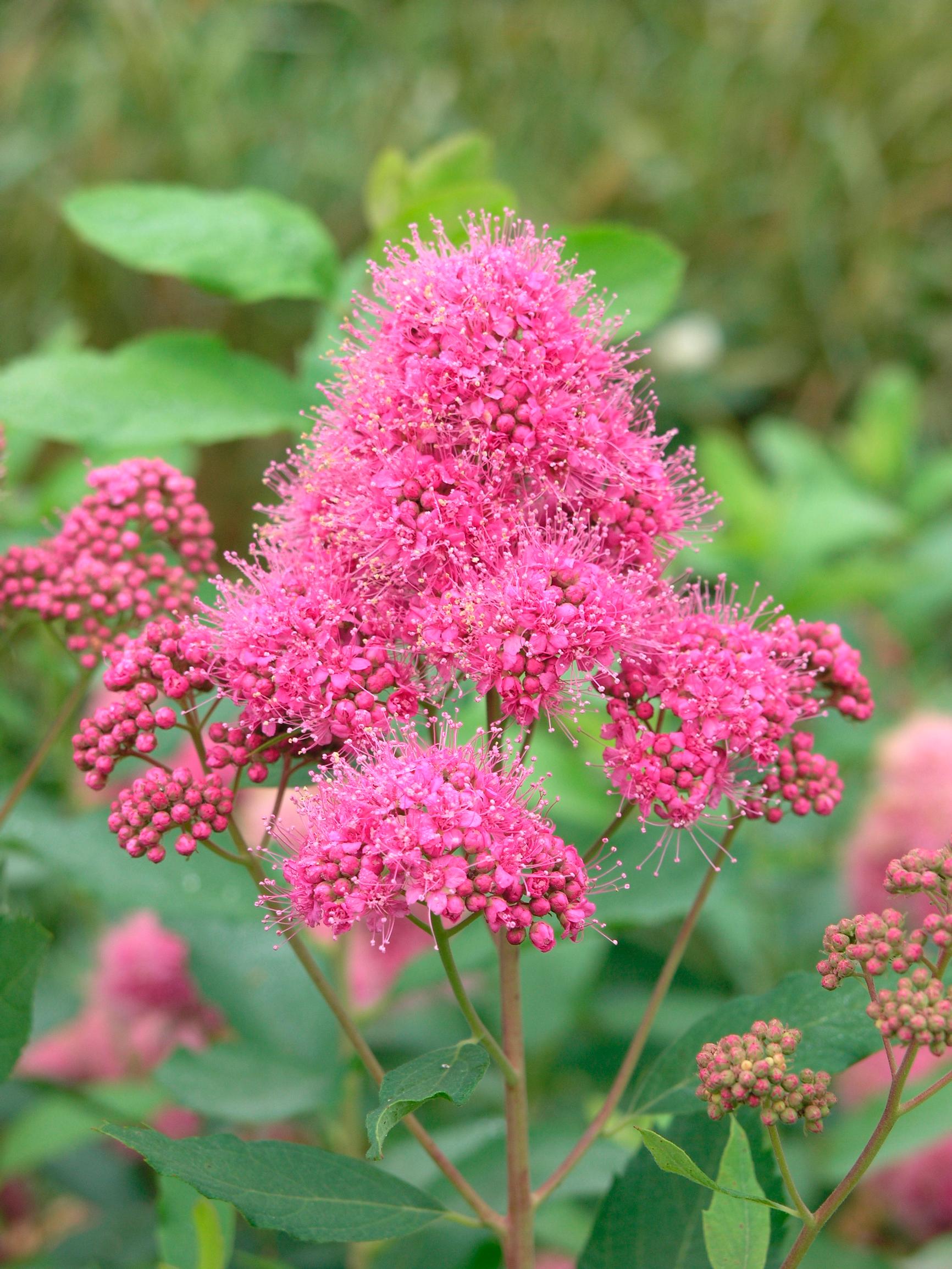
Royal spirea is an excellent choice for hedges or mixed shrub plantings. This tall spirea has earned the Finnish FinE label for its robust winter hardiness across most of the country. Though it tolerates many sites, it thrives best in moist or fresh, nutrient-rich soil.
Hardiness zone: I–VI (roughly USDA zones 2–6)
Height: 1 m (3 ft)
Light requirement: full sun to partial shade
Spiraea japonica ‘Lilly’
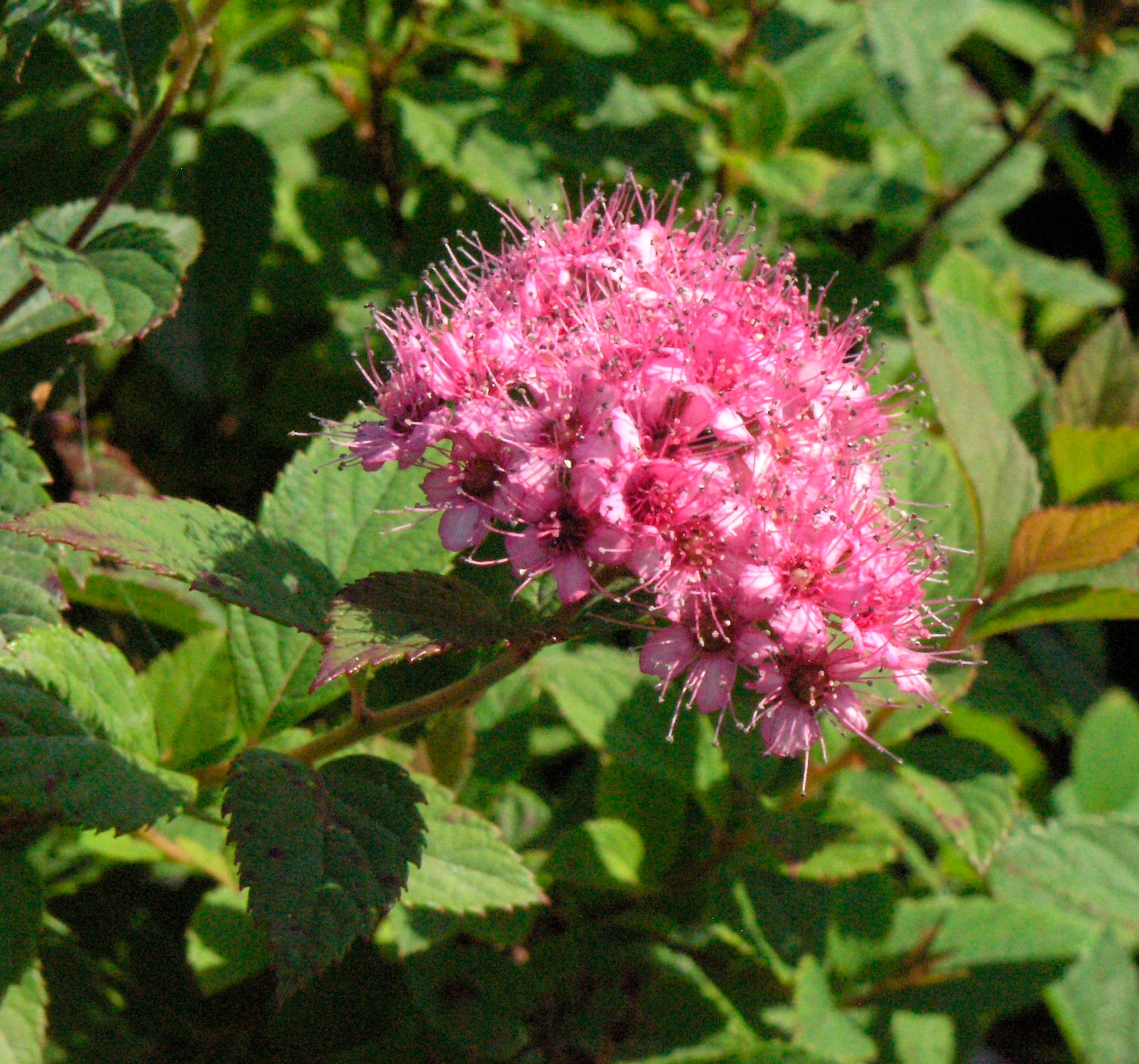
Dark-leaved spirea ‘Lilly’ forms a lush, beautifully rounded shape. Thanks to its dense growth and good coverage, it works well as a taller groundcover or along a garden path. Both its foliage and blossoms are darker than those of the basic Japanese spirea. In fall, the leaves turn a gorgeous red and yellow. Plant tummakeijuangervo in dry or fresh, nutrient-rich soil. The ‘Manon’ spirea is very similar to ‘Lilly’ but can flourish up to zone VI.
Hardiness zone: I–IV(V) or roughly USDA zones 2–5/6
Height: 70–80 cm or 28–31 in
Light requirement: full sun to partial shade
Bridal wreath spirea, Spiraea ‘Grefsheim’
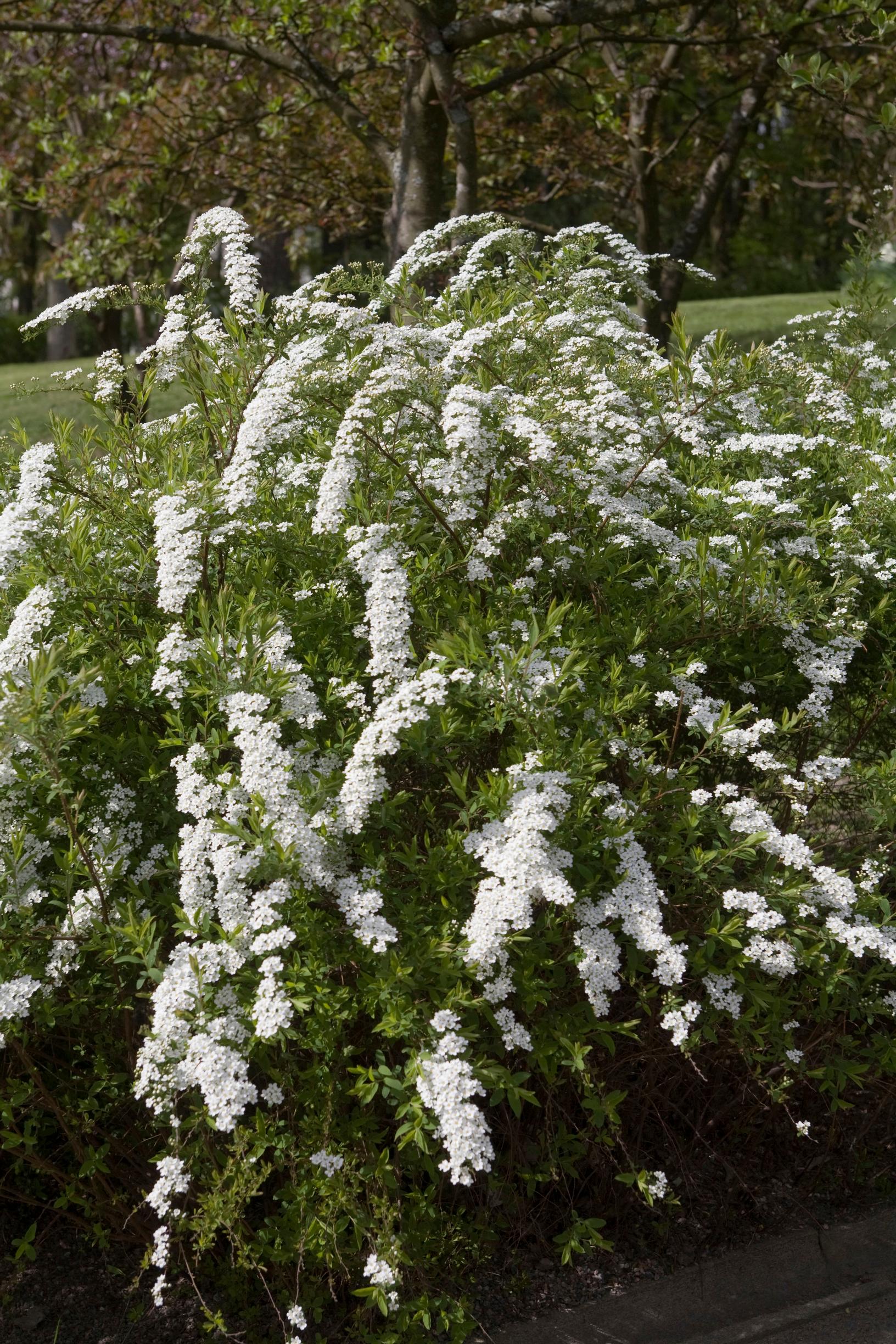
Bridal wreath spirea is among the most popular ornamental shrubs. Hardy across nearly the entire country and unfussy about its site, norjanangervo shows off abundant white blooms on its gracefully arching branches by mid-May. It’s also an excellent hedge option, though its branches may not withstand heavy plowed snow. It does well in dry or fresh, moderately fertile soil. Prune old, poorly flowering branches to renew the plant, but avoid cutting the entire shrub back.
Hardiness zone: I–VI (roughly USDA zones 2–6)
Height: 1–1.5 m (3–5 ft)
Light requirement: full sun
Rose spirea, Spiraea densiflora
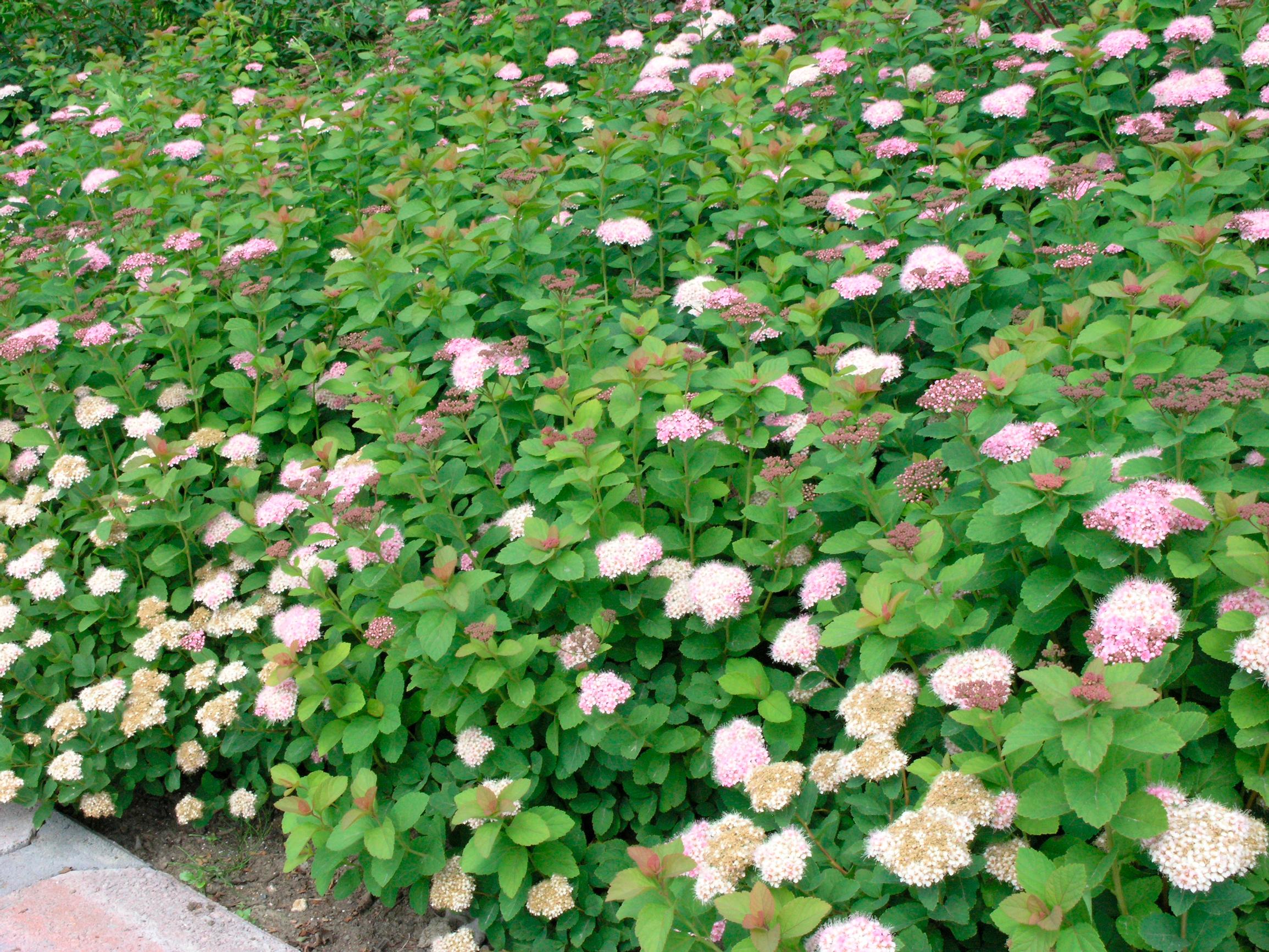
With a rounded, lush, and compact form, rose spirea is exceptionally useful for group plantings, hedges, and beautifying slopes. Its strong, deep root system makes it the most resilient spirea for slopes. Rose spirea also tolerates dry conditions. Its foliage often shows a pretty reddish tint, turning red or orange in autumn.
Hardiness zone: I–V (roughly USDA zones 2–5)
Height: 50 cm (20 in)
Light requirement: full sun to partial shade
Creeping spirea, Spiraea decumbens
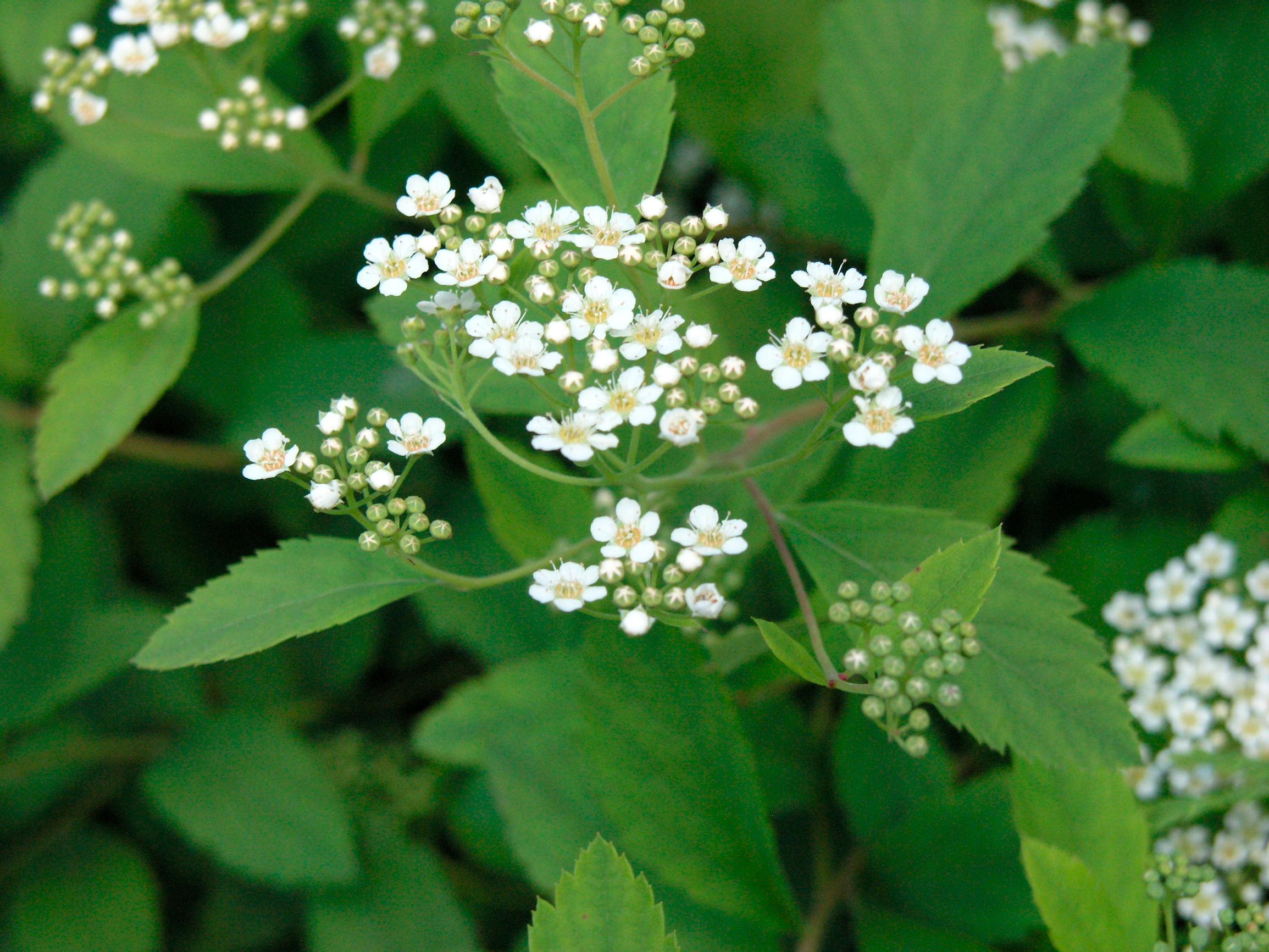
Creeping spirea is a very low-growing spirea that serves as wonderful groundcover for slopes, rock gardens, and dry sites. It spreads through underground runners yet remains relatively slow-growing with slender shoots, so vigorous grasses can easily outcompete it. Its white flowers appear near midsummer. Plant it in fresh, moderately fertile soil. Creeping spirea tolerates pruning well.
Hardiness zone: I–III(IV–V), roughly USDA zones 2–5
Height: 20–30 cm (8–12 in)
Light requirement: full sun to partial shade
Birchleaf spirea, Spiraea betulifolia
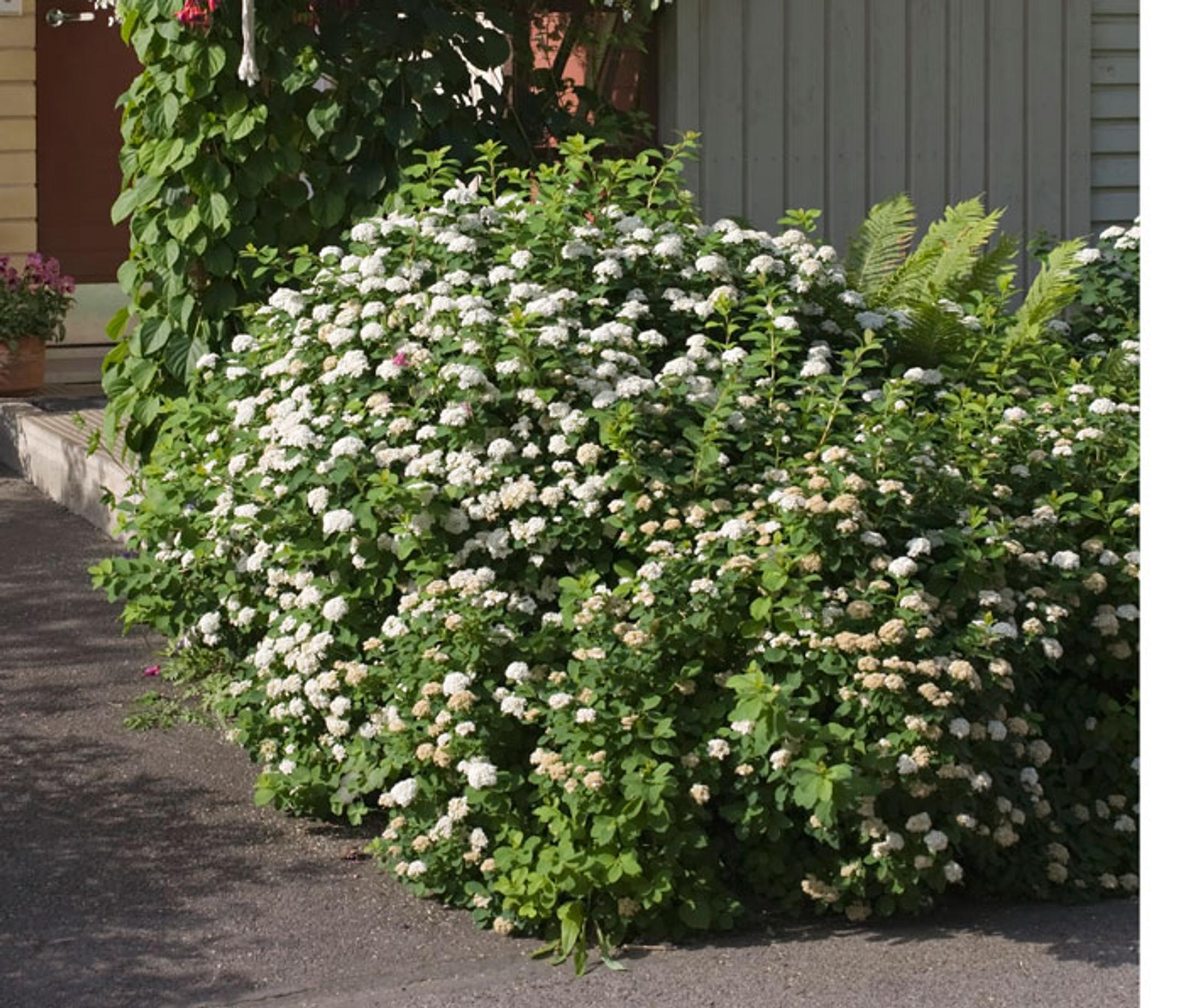
Its round, small leaves make birchleaf spirea a charming choice as a standalone shrub or in group plantings for a smaller yard. It pairs beautifully with evergreens, adding abundant white blooms. In sunny locations, its foliage can turn a brilliant orange or red in fall. Although quite undemanding, koivuangervo thrives best in fresh, moderately fertile soil, and its upright stems hold up well to snow. You can rejuvenate it by occasionally cutting it back.
Hardiness zone: I–IV(V) (roughly USDA zones 2–5)
Height: 60–100 cm (24–39 in)
Light requirement: full sun to partial shade
Beauverd spirea, Spiraea beauverdiana ‘Lumikki’
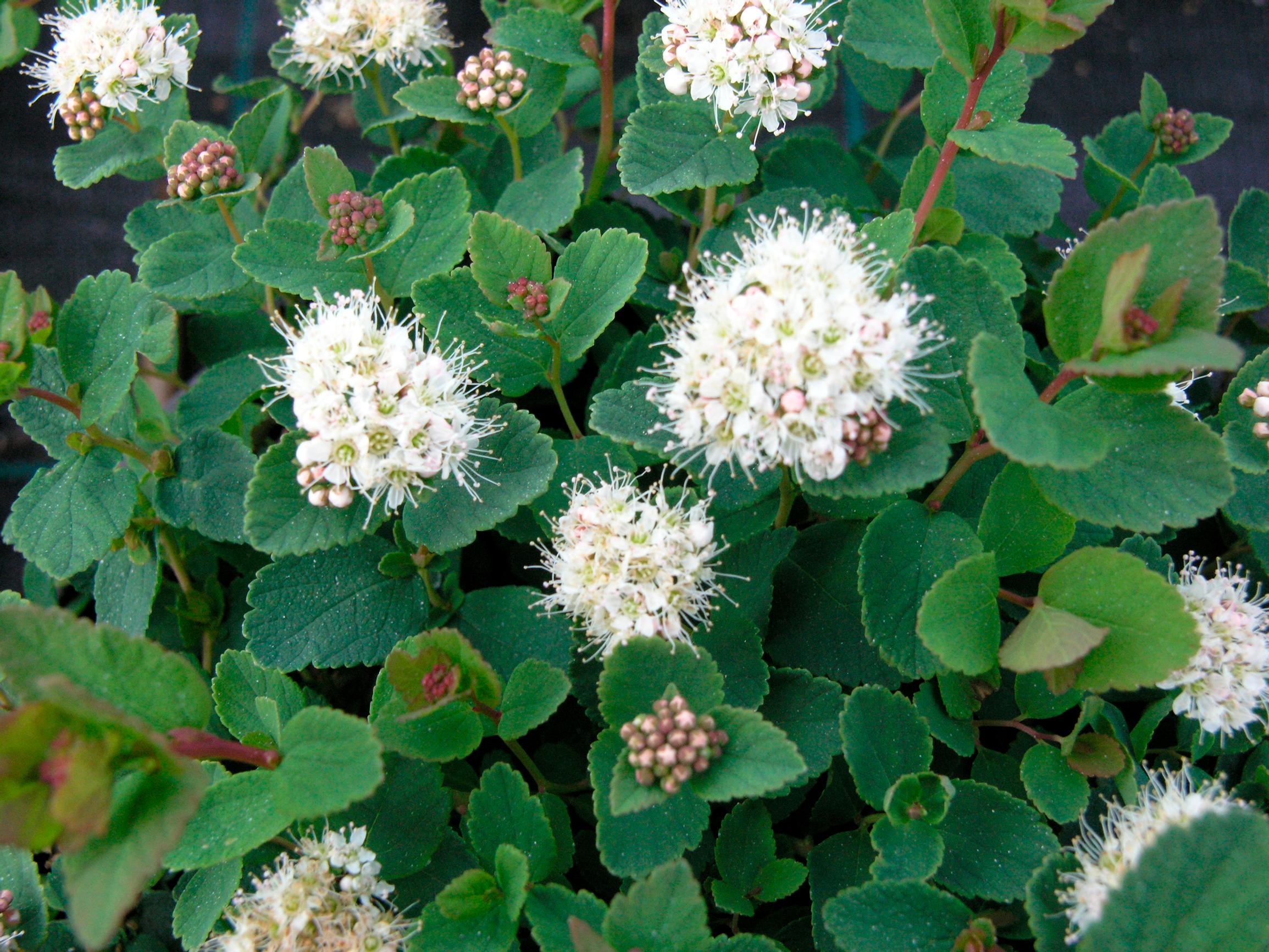
Beauverd spirea ‘Lumikki’ is a FinE-labeled, low-growing shrub ideal for groundcover, evergreen groupings, or rock gardens. It has a mounded, dense habit and a charming overall look. Beauverd spirea closely resembles birchleaf spirea but is shorter and more compact, with white blooms. ‘Lumikki’ is not demanding about its site.
Hardiness zone: I–V(VI) (roughly USDA zones 2–6)
Height: 50 cm (20 in)
Light requirement: full sun to partial shade
Dark rose spirea, Spiraea japonica ‘Anthony Waterer’
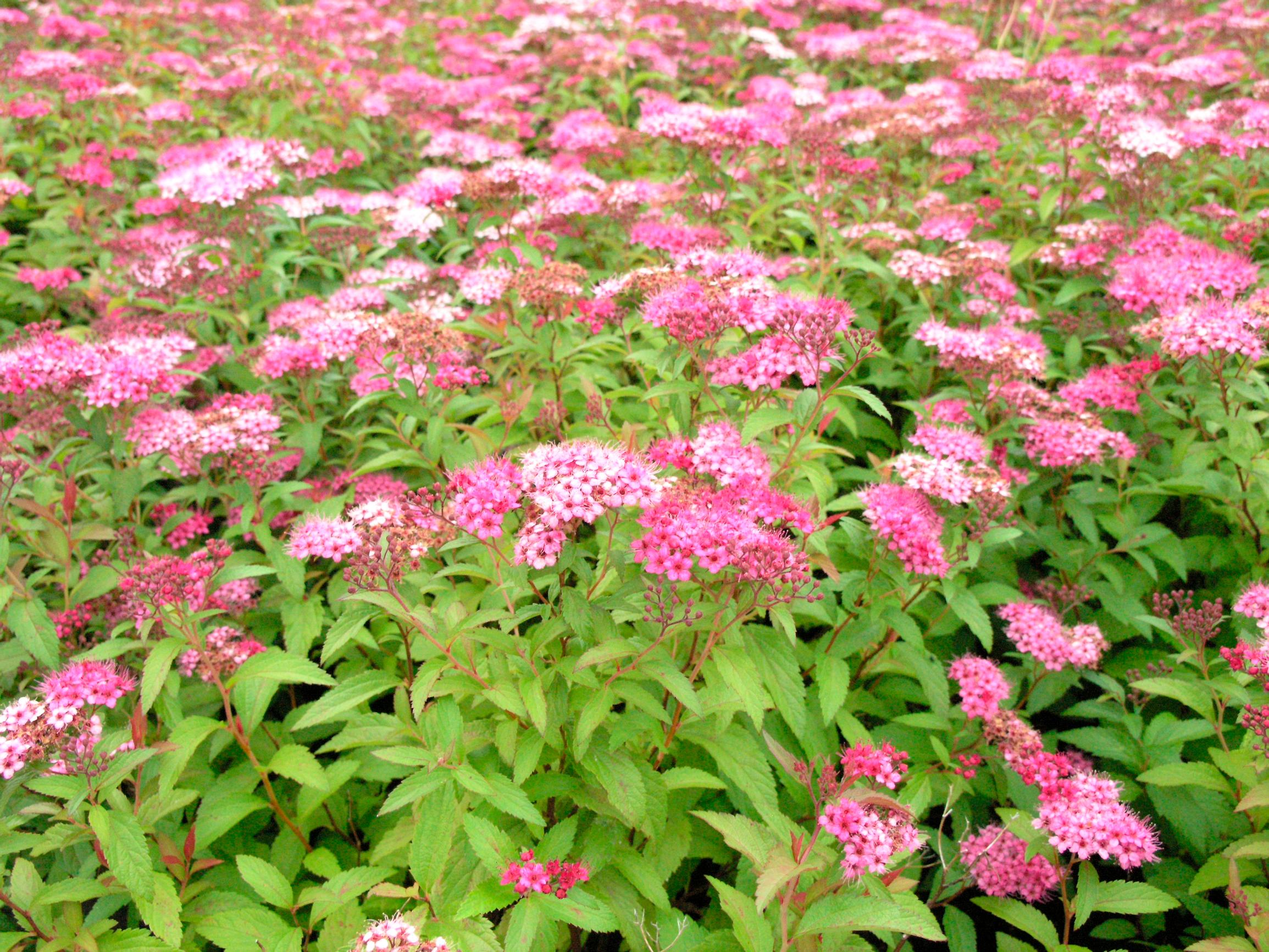
Dark rose spirea stands out with dark foliage and deep rose-red flowers, making it an excellent choice for mixed plantings. Even in zone I, ‘Anthony Waterer’ can suffer winter damage during especially cold seasons, but because it blooms on current-year growth, freezing won’t ruin its flowers. Its late bloom can continue well into fall. Plant dark rose spirea in fresh or dry soil. Since flowers form on new shoots, you can rejuvenate the plant by cutting it back.
Hardiness zone: I (roughly USDA zone 2)
Height: 80 cm (31 in)
Light requirement: full sun to partial shade
This article was updated on August 16, 2025. All mentions of willowleaf spireas and the entry for white willow spirea ‘Allikko’ have been removed. Willowleaf spirea (Spiraea alba) is classified as a nationally harmful invasive species in Finland, making it illegal to possess, cultivate, transport, sell, market, or release into the environment.


